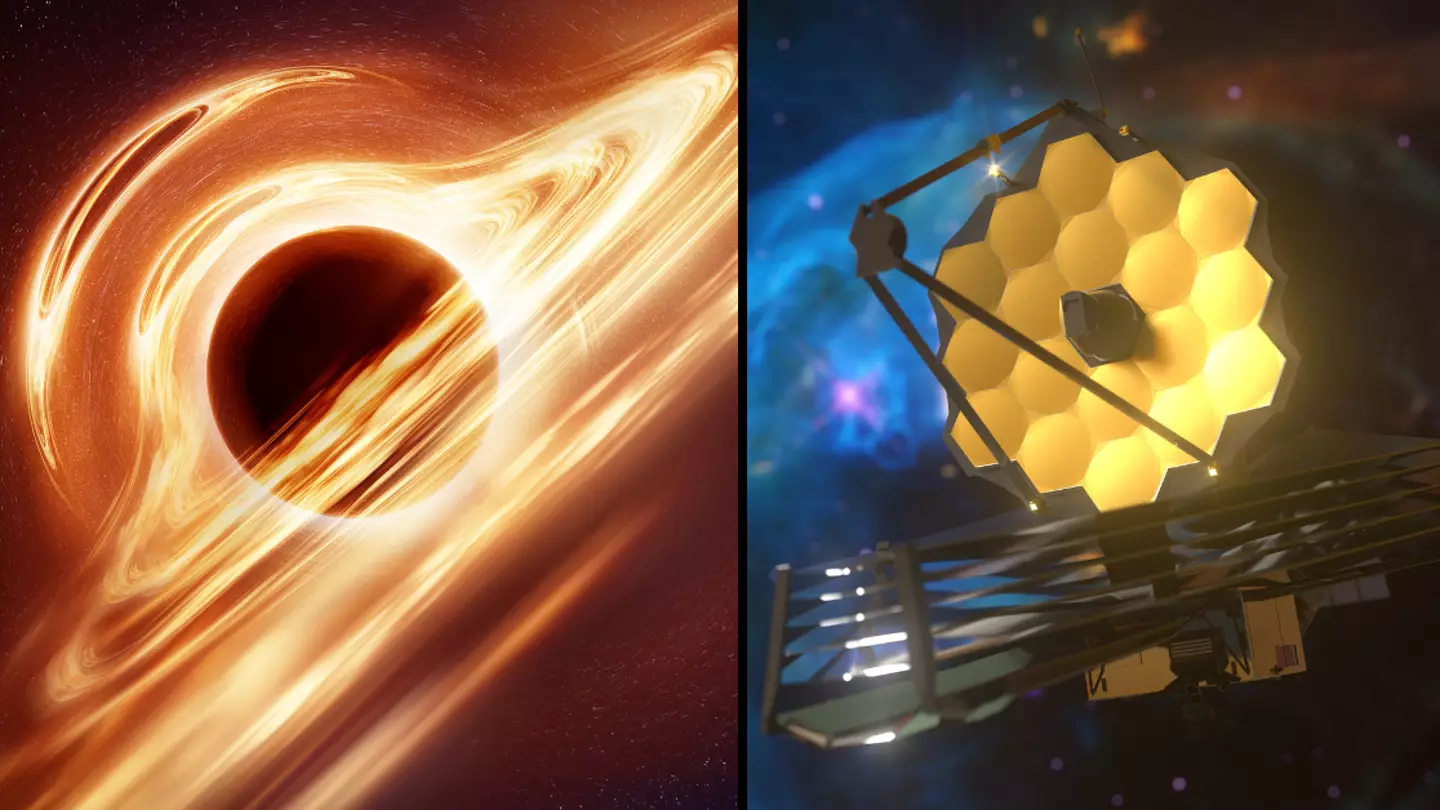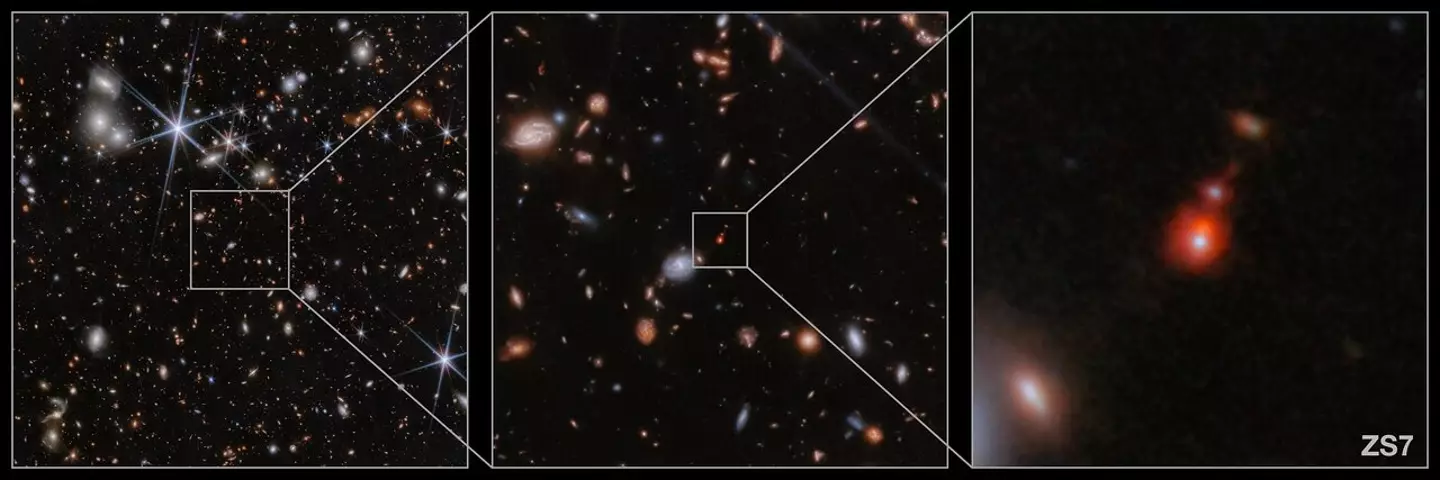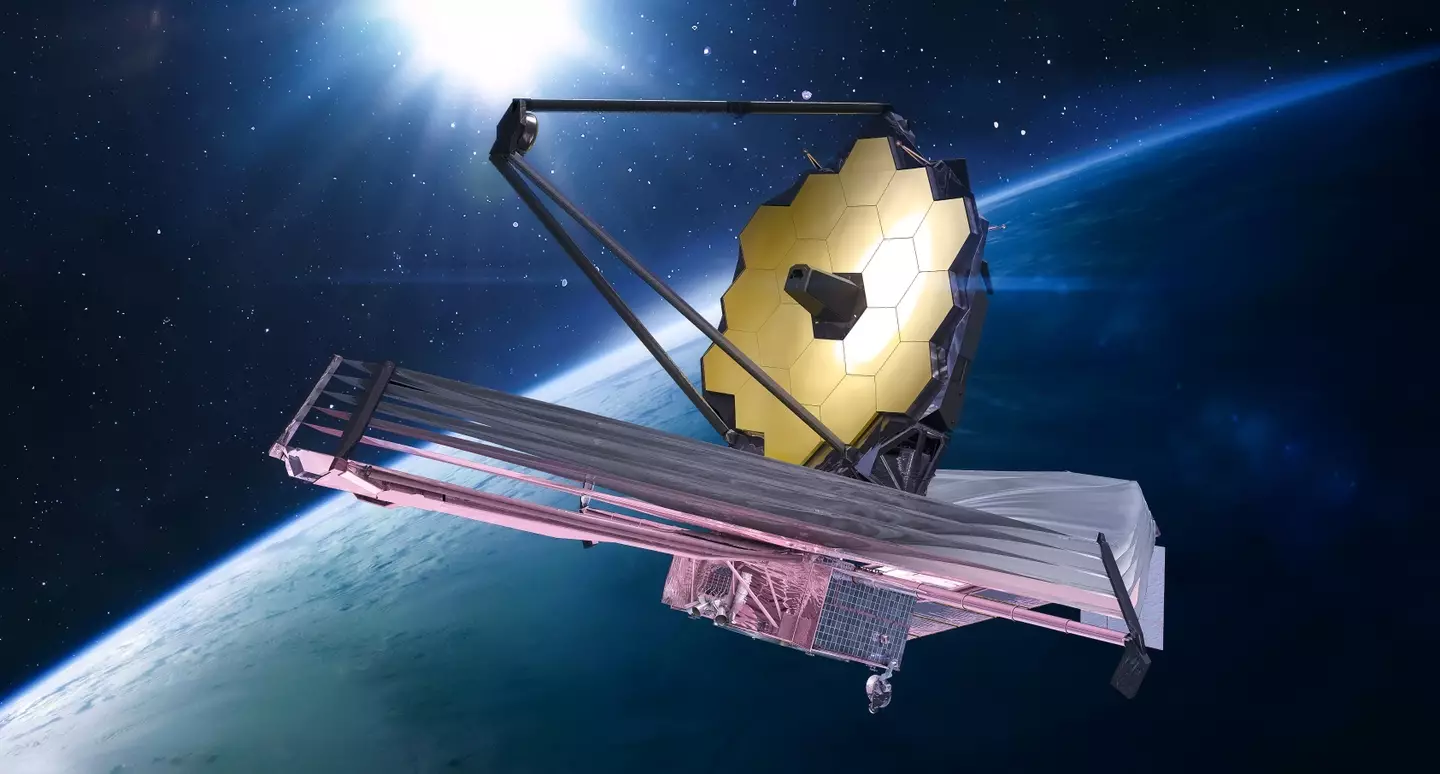
Scientists have managed to capture the first known instance of black holes smashing in to each other through a $10 billion piece of kit that 'travels through time'.
The team of astronomers from across the world - science's answer to The Avengers, if you will - worked together to find evidence of an ongoing collision between two of the universe's galaxies and the ginormous black holes at the middle of them both. One of the black holes is 50 times heavier than our own Sun.
After finding images of this, scientists labelled the discovery as 'unprecedented'.
And the images found? Well, they're from a long, long time ago when the universe was just 740 million years old. For context, it is currently 13.7 billion years old, apparently.
Advert
That's all made possible thanks to NASA's James Webb Space Telescope (JWST), which is spending its time in deep space photographing anything and everything scientists want to study.
A big chunk of its time is spent analysing one of the phenomenons loved most by the ordinary person - black holes.
The first photo of a black hole was captured around five years ago, meaning we have so much more to learn about what what lies beyond the event horizon.

And now, through the JWST, fresh observations have provided evidence for a still ongoing merger of two galaxies and their massive black holes when the universe was just 740 million years old. The system is known as ZS7.
Advert
Lead author of the study, Hannah Übler of the University of Cambridge, said: "We found evidence for very dense gas with fast motions in the vicinity of the black hole, as well as hot and highly ionised gas illuminated by the energetic radiation typically produced by black holes in their accretion episodes.
"Thanks to the unprecedented sharpness of its imaging capabilities, Webb also allowed our team to spatially separate the two black holes."

Übler said: "Our findings suggest that merging is an important route through which black holes can rapidly grow, even at cosmic dawn. Together with other Webb findings of active, massive black holes in the distant universe, our results also show that massive black holes have been shaping the evolution of galaxies from the very beginning."
Webb is a 'time machine' in the sense that it takes images from deep in space at huge distances away.
Advert
Because of how light travels, when we observe objects that are far away, we observe them not as they are, but as they were. To flip it, alien life on another planet looking at Earth wouldn't necessarily see humanity, but rather what came before us.
Webb can look that deep in to space, the light being captured can be as old as 13.5 billion years.
On the colliding black holes found by Webb, the team found that once they merge, they will also produce massive gravitational waves.
Events like this will be detectable with the next generation of gravitational wave observatories, such as the upcoming Laser Interferometer Space Antenna (LISA) mission, which was recently approved by the European Space Agency and will be the first space-based observatory dedicated to studying gravitational waves.
Topics: James Webb Space Telescope, Science, Space, Technology, World News